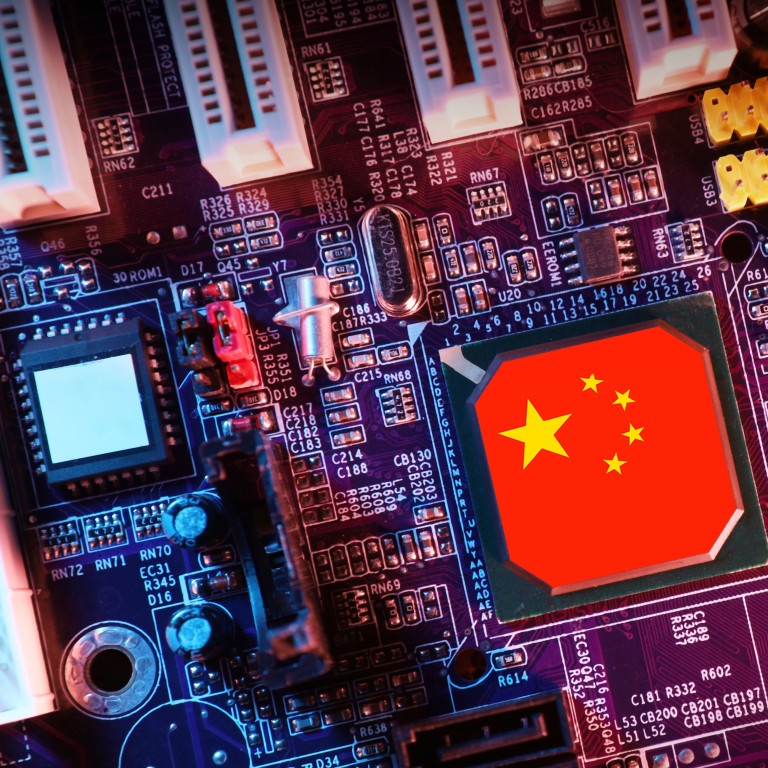
Tech war: China chip equipment makers expect a windfall in first half amid soaring demand for local machines
- The increase in expectations comes after the US and its allies intensified restrictions on China’s access to advanced chip equipment
- Naura Technology Group, a Beijing-based maker of etching tools, expects a year-on-year increase in profit of between 121 and 156 per cent
China’s major semiconductor equipment makers expect strong growth in the first half of 2023, thanks to soaring demand for local products amid tight US restrictions on the export of advanced chip-making equipment to the country.
Naura Technology Group, a Beijing-based maker of etching tools, expects a year-on-year increase in profit of between 121.3 and 155.8 per cent, to between 1.67 billion (US$233 million) and 1.93 billion yuan in the first half of 2023, while revenue is expected to surge by up to 64.4 per cent to 8.95 billion yuan, according to a stock exchange filing on Saturday.
Advanced Micro-Fabrication Equipment (AMEC), another leading chip equipment maker started by US scientist Gerald Yin Zhiyao in 2004, said on the same day that it expects its revenue to grow by 28 per cent to 2.53 billion yuan in the same period, while net profit might surge by between 109.5 and 120.2 per cent to 980 million yuan-1.03 billion yuan.
The increase in expectations comes after the US and its allies intensified restrictions on China’s access to advanced chip equipment on national security grounds, to restrict China’s development of its domestic semiconductor sector.
Naura posted a 51 per cent and 143 per cent jump in revenue and profit in the first half of 2022, respectively, while AMEC saw a 47 per cent surge in revenue and an 18 per cent increase in profit over the same period.
China says chip output picked up in June but remains down in first half of year
Both companies attributed their business growth to an increase in market share, with Naura attributing the improvement to “the steady increase in market share of the company’s semiconductor equipment business and the continuous improvement in operating efficiency”. AMEC said its etching equipment “continues to be recognised by more and more domestic and foreign customers”.
AMEC added that it had cashed out part of its stake in Shanghai-listed Piotech, another Chinese chip equipment maker, a move which contributed to the profit surge. Piotech’s stock price has increased 49.5 per cent since the beginning of 2023 amid escalating US sanctions and China’s increased semiconductor self-sufficiency drive.
Washington upgraded its export controls on China’s access to advanced US chip equipment last October, with its allies following suit this year. The Netherlands announced it would impose new export controls starting this September that bar high-end chip-making machines from being sold abroad without a permit. This came a month after Japan said its companies must obtain a licence before they can sell 23 types of chip-making equipment to China starting in July.
With foreign players, such as US etching tool maker Lam Research, pulling their staff and operations out of China since late last year, the country’s local chip makers have rushed to find domestic alternatives, although most of them are unable to deliver advanced process nodes.
Yangtze Memory Technologies Corp, China’s top memory chip maker, is planning to use domestically-sourced equipment to produce advanced flash memory products after it was put on a US trade blacklist last year, the Post reported in April.
In the first three months of 2023, semiconductor equipment sales to China fell 23 per cent year on year to US$5.86 billion, in sharp contrast with increased shipments to North America and global markets in the same period, according to data from SEMI, a global industry association.
Meanwhile, the global chip equipment market is likely to shrink this year amid global economic headwinds and an industrial downturn.
In 2023, global sales of semiconductor manufacturing equipment by original equipment manufacturers are expected to contract by 18.6 per cent to US$87.4 billion, according to a SEMI report last week, which added that China is expected to surpass Taiwan to return as the top buyer in 2024.

